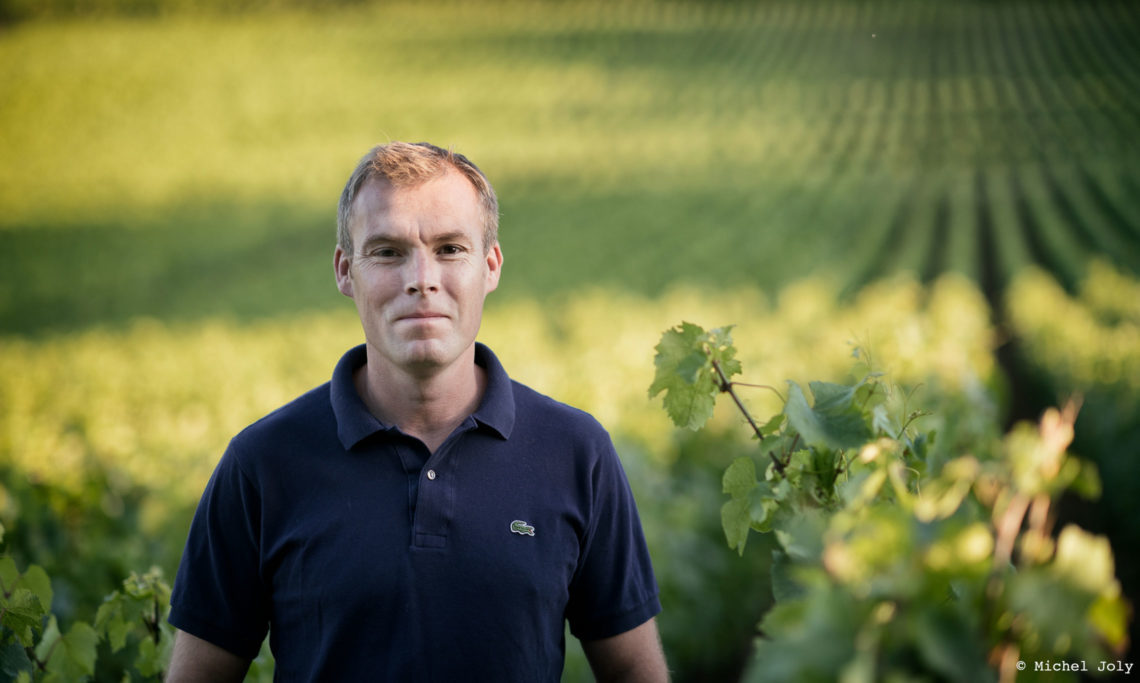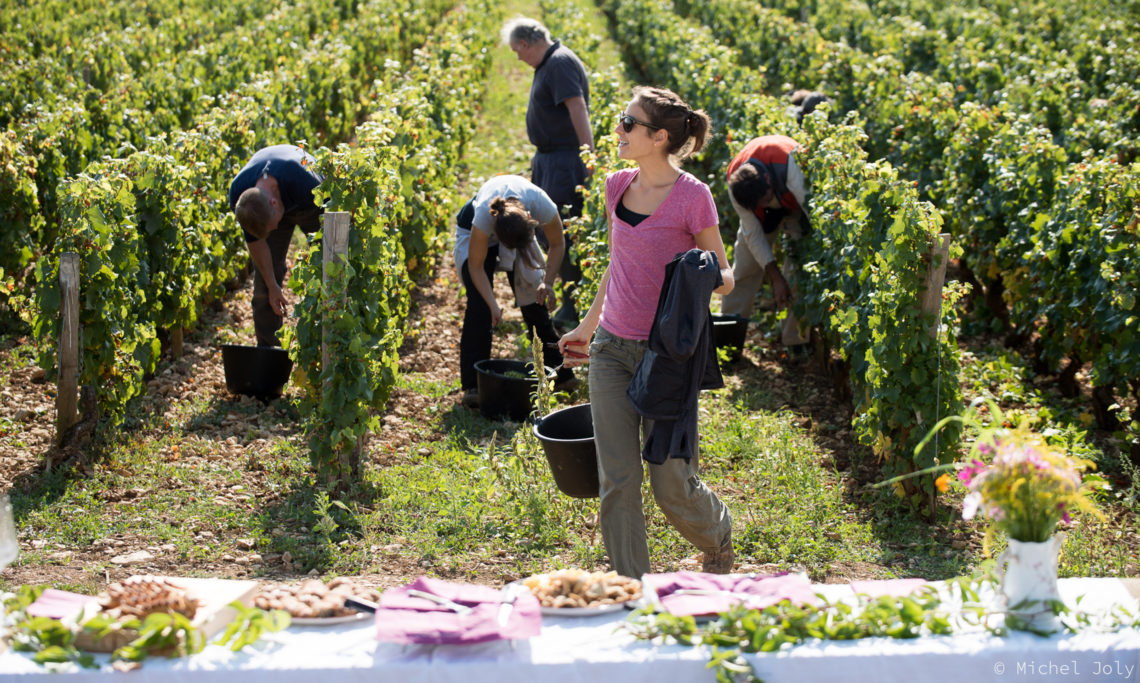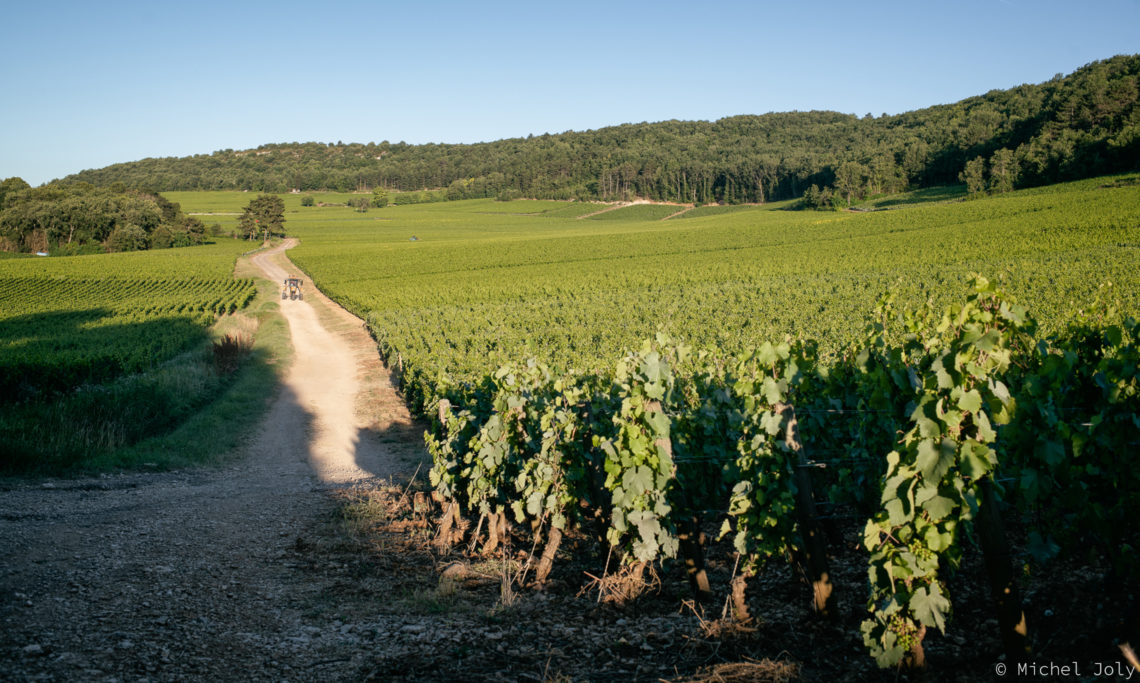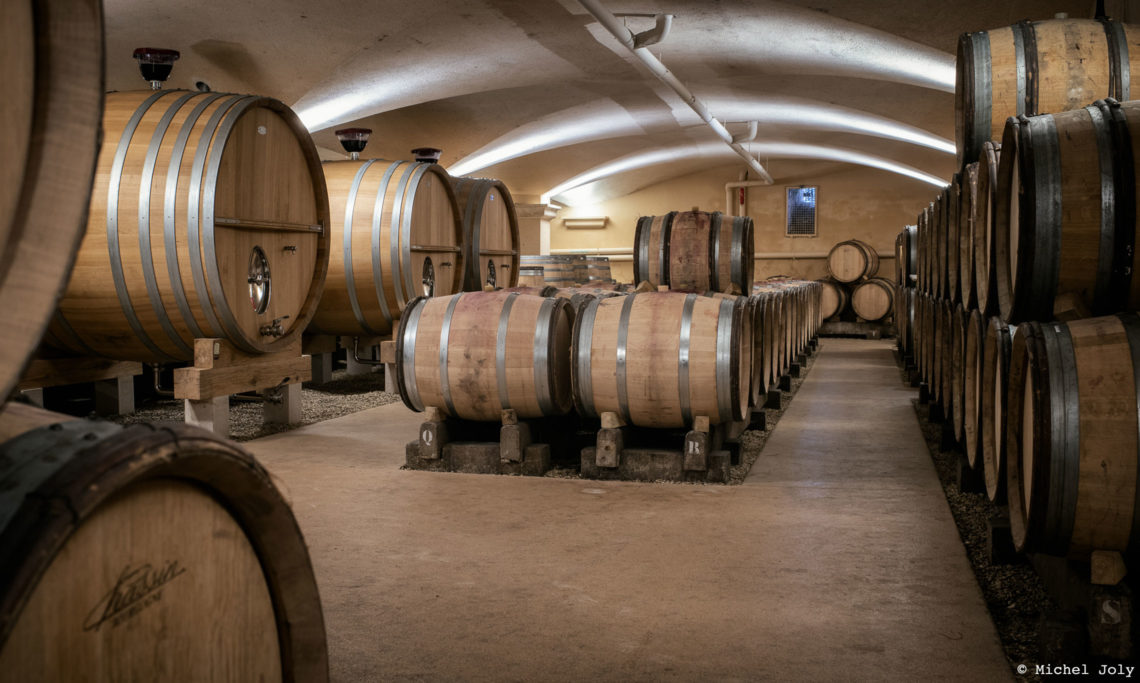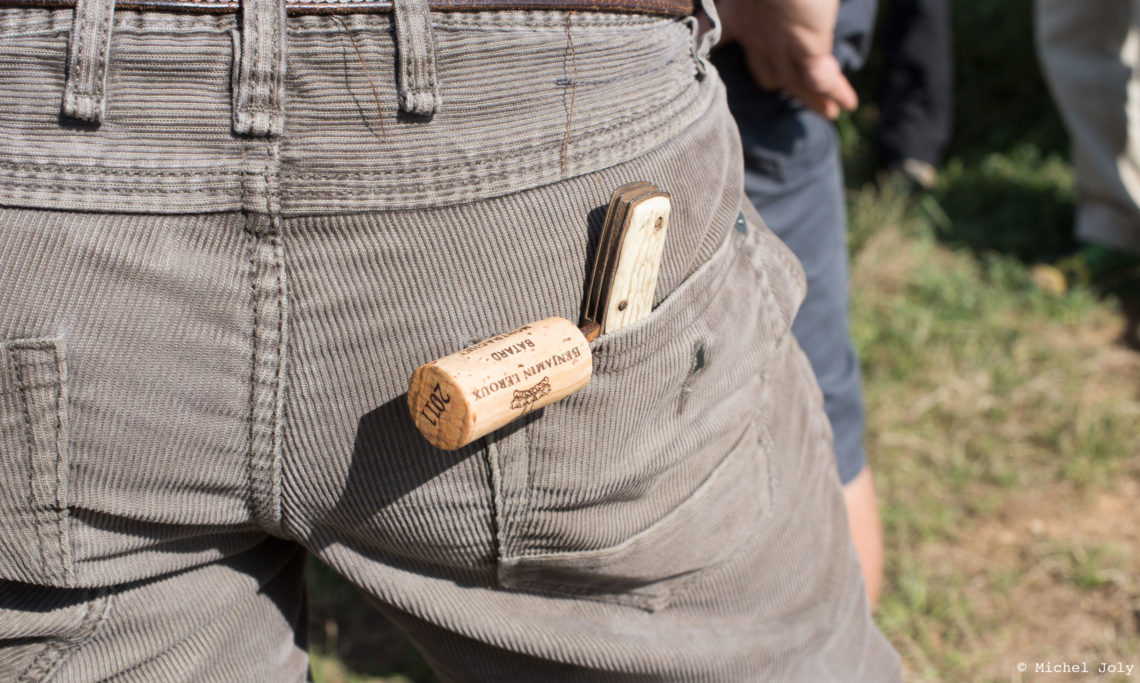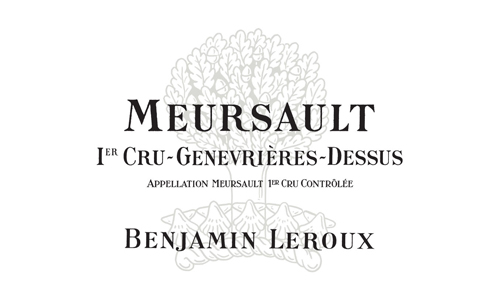Domaine Profile
- Location: Beaune, Côte de Beaune, Burgundy
- History: Ben was born in 1975 in Beaune, not to a vigneron family, yet decided in his teens that wine was what he wanted to do. After his enology studies, he worked at Cos d'Estournel in Bordeaux, Domaine Drouhin in Oregon, Louis Jadot in Beaune, and Comte Armand in Pommard, where he was named technical director and manager at the age of 24. In 2007, he founded his own domaine and négoce.
- Size: Domaine: 8 ha (19.77 ac); Grape purchases: 20 ha (49.42 ac)
- Varieties: Pinot Noir, Chardonnay, Aligoté
- Farming: Domaine: certified organic, practicing biodynamic; Grape Purchases: Lutte raisonnée, organic, and biodynamic
- White Winemaking: Uncrushed whole-cluster pressing; ambient yeast fermentation in tank, barrels or foudres; ageing for 12 to 22 months; fining is not systematic; filtration is avoided; bottled since 2019 with Diam corks and 50 to 70ppm total sulfur.
- Red Winemaking: Up to 30% whole cluster depending on vintage and cuvée; ambient yeast fermentation; pumpovers in the beginning, punch downs towards the end, 3 to 5 on average; post fermentation maceration; aged in foudres or barrels, maximum 30% new oak; rarely fined or filtered; natural cork closures; 40 to 50ppm sulfur at bottling.
By Vicki Denig and BW&Co, 2021.
One of the wonderful aspects of Domaine du Comte Armand, is the family’s habit since 1985 of placing their trust in surprisingly youthful talent. Their instincts have been remarkable. Between Pascal Marchand and Paul Zinetti was Benjamin Leroux, who was handed the reins of the domaine in 1999, at the age of 24.
Ben stayed at Comte Armand for fifteen vintages and started his own side project in 2007. Though there are no family vineyards, he now vinifies approximately 30 hectares, 8 of which are domaine holdings that are farmed organically and biodynamically.
His range of appellations is astounding. It spans the Côte from Chassagne-Montrachet to Gevrey-Chambertin, and includes all levels in Burgundy’s hierarchy. Particular favorites of ours are his collection of premier crus, not only because many of them are the most prized, but sometimes precisely because of the opposite. Take Blagny. Right? Yet, with its high altitude and white marl soils, it produces reds and whites with such rebellious minerality and freshness they regularly steal the show.
Blagny is a good metaphor for Ben. Though he has become one of the most respected classical winemakers of his generation, his underlying unconformity, wit, and humour are why he is also among everyone’s most loved.
Biography
Benjamin Leroux was born in 1975 to two Beaune natives. During his childhood years, his parents ran La Violette, a flower shop located on the Place Carnot in the heart of the city center. This is where Becky first met him, as a baby.
Growing up in Beaune, Ben naturally found himself surrounded by vines, despite not coming from a winemaking family. “I was able to taste wine, not drink it, from a very young age, and I always liked it,” he recalls. “Not because it was forbidden, but for its aromatics, flavors, and the experiences created around it.”
Ben’s curiosity led him to the lycée viticole in Beaune at the young age of 15. This was much to his grandmother’s chagrin, because unless one came from a family of vignerons, technical schools were viewed as the last option when all others had failed. But even though he was quite good at other subjects in school, Ben’s mind was set on wine. “For me, the lycée viticole was the only option,” he says. To satisfy both his and his family’s desires, he enrolled in a general agriculture program with the option of viticulture and oenology—though deep down, there was no doubt in his mind as to where his studies would lead him.
During the three years before his baccalauréat (final high school exam), Ben learned the ins and outs of pruning, harvesting, and various cellar jobs. “My first internship was working with Pascal Marchand when I was 15, and looking back now, it was one of the most important experiences of my life,” Ben recalls. He remembers that during the early 1990s, few vignerons were actually discussing biodynamics and sulfur reduction; Pascal was an exception. (Ben equally cites Jean-Claude Rateau, Emmanuel Giboulot, and Yvon Contat as additional influencing forces.)
“This was a group of people who were starting to think that maybe we could do things differently,” Ben recalls. “You have to remember that back then, we didn’t have the methods of control we have today. And a lot of sulfur was used to sanitize the barrels. So some barrels ended up with too much sulfur, some with none—what was great was the spirit.” This attitude of autodidacticism, coupled with curiosity and passion for responsible farming, were perhaps the most formative years of his budding career.
Ben also had a cartesian side of his brain to feed, though. His second internship was with the ITV, a government agency that researched all sorts of matters pertaining to viticulture and winemaking. “At the time, they were researching the side effects of the use of chemicals in the vineyards,” Ben says. “So I had both the empirical and the scientific points of view from the get go.” Despite his young age, he walked away from both internships with a fervent conviction that organic and biodynamic farming were the way to effect positive change in Burgundy.
His interest in Pinot Noir and Chardonnay then led him to Domaine Drouhin in Oregon in 1994, at a time when just six people worked on the estate’s team. He returned to Burgundy and finished his oenology degree in Dijon, where surprisingly, he was the only regional native in the graduating class. With no family vines to his name, Ben’s appetite for travel became insatiable.
At university, he was told that he could only complete his next internship in Burgundy. Ben took matters into his own hands, sneakily asking his head teacher to sign a document on a very busy day—one that permitted him to gain experience at Cos d’Estournel in Bordeaux. “It was the first time in my life that I was away from Pinot Noir and Chardonnay,” he says, crediting the estate’s strong impact on his knowledge of blending. From Bordeaux, Ben worked an additional harvest in Burgundy with Jean-Yves Devevey —“which was amazing”— and managed to convince an officer to let him sidestep his one-year “mandatory” military duty. He then headed to the Southern Hemisphere to make Sauvignon Blanc at an industrial winery in New Zealand, to which he laughs, “Making Sauvignon Blanc taught me that I’ll never again make Sauvignon Blanc!”
However, two weeks prior to leaving for New Zealand, Ben was offered a position at Louis Jadot, which remained on the table straight upon his return. “I realized quite quickly that it was not the winery size that I was looking to work for,” recalls Ben. Around the same time, Pascal Marchand wanted to make a change and was talking about leaving Comte Armand; Ben was his first choice to succeed him. “I didn’t wait for the confirmation of the job. I resigned from Jadot on the spot and simply went back to working in the vineyards,” he says. Shortly after, he was asked to take over from Pascal.
Ben was just 24 years old in 1999 when he started. “I was the apprentice, then I was the boss—I’m so thankful to the Comte for being so open-minded. I would never be able to let a 24-year-old run my own company. It was great and I stayed for fifteen vintages.” Ben also remembers being welcomed by the big hitters straight away. “Dominique Lafon was one of the first to come taste my 1999s!” he exclaims.
A few years later, Ben received a tempting offer from Anne-Claude Leflaive, and he’d also been toying with the idea of starting his own négoce. He had been inspired by the small négoce project he had started for the Comte Armand in 2001 with purchased grapes from Auxey-Duresses and Meursault, which is when Ben realized that he could still make serious wine without growing his own fruit. “I was not afraid to start as a négociant, despite growing up at a time where the reputation for négoce wine was just average,” he says. Ben had met his future business partner through Jasper Morris in England. Pierre Morey who was the technical director at Leflaive and supportive of the choice of Ben as his successor had advised him to keep some freedom.
But the idea of a side project didn’t suit the Leflaives, which pushed Ben to bring the case to the Comte himself. “I said, this is the situation: I have a flattering proposition, I’m not asking for a raise of salary to stay, but I am asking for some freedom to start my own label,” he says. And just like that, in 2007, it happened.
Ben and his business partner discussed purchasing vineyards, though obtaining their own space was the first priority. “The idea was to buy fruit while building a winery and team, so that when the vineyards came, we’d be ready,” he explains. Ben actively looked for a place to make wine, but they are not easy to come by. Harvest was lurking just around the corner, and he and his wife Libby were expecting their first child. In the way that many great things come unexpectedly, so did Ben’s winemaking space. “Just as I was resigned to delay the start of our project until 2008, I received a phone call about a space two days later,” he says. The winery was built in 1848. Its latest occupant, until the company was sold in the mid-nineties, was Jaboulet-Vercherre. Even though it needed a lot of work, Ben thought it felt right and rented it practically on the spot.
The winery was overwhelmingly large, though. “So the idea was to rent it to other growers and share the space, materials, and team members.” The first guest was Dominique Lafon who needed a space for his own négoce. Ben would then house Nicolas Potel, Evening Land Vineyards, and finally Nicolas Rossignol, until the 2016 vintage, when Nicolas moved into a space of his own he built in Beaune. By then, Ben had come along far enough that he no longer needed roommates.
Ben’s first vineyard purchase was a mere 0.16 hectares in 2009—though we’d be remiss to call any holdings from Batard-Montrachet “mere.” In 2013, Ben purchased 3.5 hectares across various sites in Meursault, slowly growing his holdings through subsequent purchases or leases up to the 8 hectares he has today.
Farming
With eight hectares, Ben farms just under a third of his production. Though he worked organically and biodynamically from the beginning, it took him several years to apply for organic certification, which came in 2016. “It’s no secret that when you purchase or rent vineyards they are often not in great shape. The first two years, nothing grows,” he says. And while the recovery moves fast after that, he points out that at least five or six years are necessary to see a significant conversion when transitioning a vineyard from conventional farming, even though the certification process only takes three years.
As for biodynamics, Ben says that “it is a philosophy, not a technique. What I like most about it, is the effect it has on the entire team. It teaches them to observe, not just the plant but what surrounds it—to think of the whole environment and not look for the easiest way to do something. It’s human nature. We all have a tendency to look for the easy way out. But sometimes it’s not about us, it’s about the vines or the soil—you have to make decisions not thinking only about yourself.”
Ben is not planning to pursue a biodynamic certification, however. “If it’s treated like a recipe, it doesn’t work,” he says. “And the certification is a bit of a recipe. You have to follow some rules. You have to apply one 501 preparation, two 500s.” But he points out that practicing biodynamics in Chile, the south of France, in Burgundy, or in Germany, requires different approaches. “I love the philosophy. We are believers and are practicing it, but in our own way,” he concludes.
Ben's Cartersian side is notoriously disdainful of soundbites. This becomes evident when we press him about current trends in farming.
“The point of being open-minded is not to do the same thing I was doing twenty years ago, and suddenly there is no more questioning,” he says, before conceding with mild expasperation that some of his vineyards are hedged high and late; that plowing has been drastically reduced; that he does use cover crops and is experimenting to find the proper blend of seeds, but that in the end, he may favor natural cover, which he likes to have year round except from May to July. He adds that what is important to him is to make the appropriate choice for each vineyard, a choice that must take into account differences in genetic material, vine age, vine health, soil type, at what stage each vineyard is in its conversion to organics and biodynamics, and most importantly, the climate specific to the season at hand.
White Winemaking
The fruit is not crushed, except when the juice ratio is low. Whole-cluster bunches are pressed in a pneumatic press. The length of the cycle depends on the vintage, but Ben generally aims for three hours. He points out that because he is blessed with ample space, the juice can settle anywhere from just a few hours to 48 hours, depending on the vintage conditions. At this point, 10ppm sulfur may be added, sometimes none. Fermentations are with ambient yeast. The wines are aged for 12 to 22 months in a variety of vessels, sometimes stainless steel tanks, but mostly in barrels or foudres, of varying sizes and stave thicknesses. The percentage of new oak varies from none to 30%. Sulfur is usually added in the spring when the cellar warms up. Fining trials are systematic for all whites, but not necessarily adopted. Filtration is generally avoided. When filtration does occur, it is usually in riper vintages that struggle to settle, and only for the last few liters in the tank, which represent about 10% of the cuvée. Though Ben used to favor screw cap closures, since 2019, and moving forward, the whites will be bottled with Diam corks. Total sulfur at bottling is 50 to 70ppm.
Red Winemaking
Whole-clusters range from none to 30%, with a few exceptions above that. It depends on the genetic material and ripeness, and the ultimate decision is made on the sorting table. The fruit is cooled down to 15°C after which fermentation starts with ambient yeast. A nominal amount of sulfur is added to the grapes, less than 10ppm. If fermentation is reluctant, juice from an already fermenting tank is used as a starter. Macerations last about three weeks, with half on the skins, half in post-fermentation. In general there are pump-overs in the beginning, and punch-downs towards the end —a total of 3 to 5. These interventions are decided by tasting, and a tank may be left untouched for several days. The wines are aged for 12 to 22 months, mostly in barrels, a maximum of 30% new, some in large wood foudres. Sulfur is added when the cellar warms up in spring. The reds are almost never fined and filtration is very rare. Closures are natural cork. Total sulfur at bottling ranges from 40 to 50ppm.
Wines
-
White
- Aligoté
- Bourgogne
- Auxey-Duresses Blanc
- Monthelie Les Duresses
- Puligny-Montrachet
- Meursault
- Meursault Les Vireuils
- Meursault-Blagny 1er Cru La Pièce Sous Le Bois
- Meursault 1er Cru Genevrières Dessous
- Meursault 1er Cru Genevrières Dessus
- Meursault 1er Cru Le Porusot
- Chassagne-Montrachet Blanc 1er Cru Abbaye De Morgeot
- Chassagne-Montrachet 1er Cru Les Embazées
- Chassagne-Montrachet 1er Cru Tête du Clos
- Batard-Montrachet Grand Cru
- Corton Charlemagne Grand Cru
-
Red

